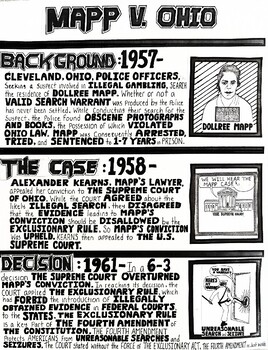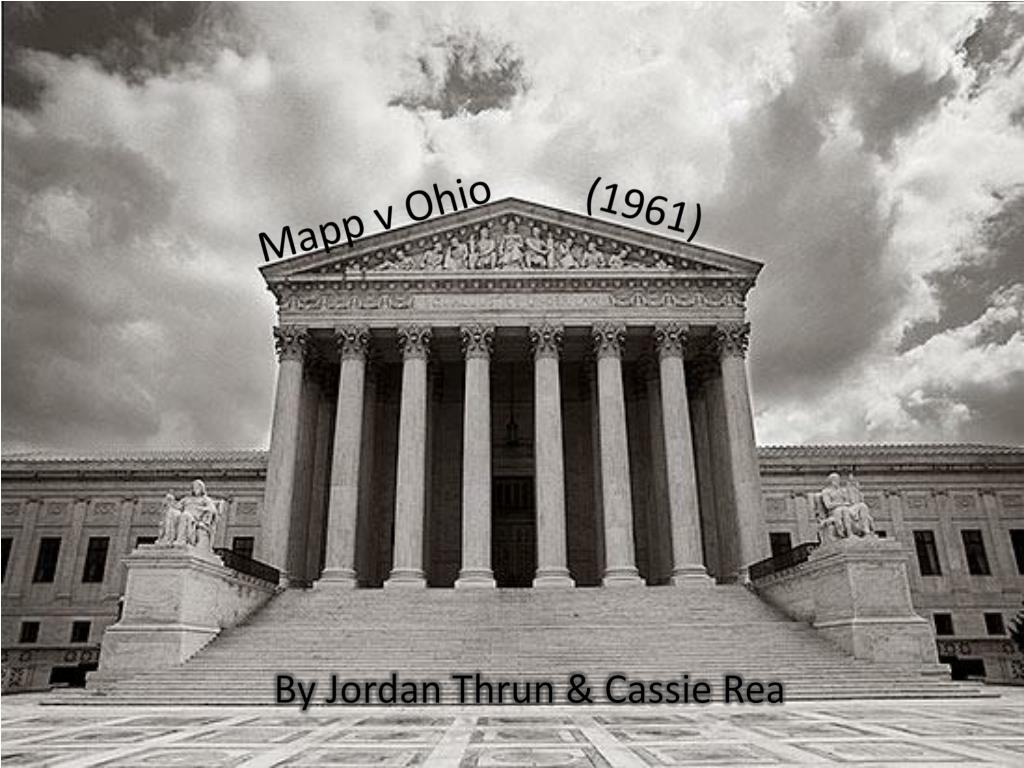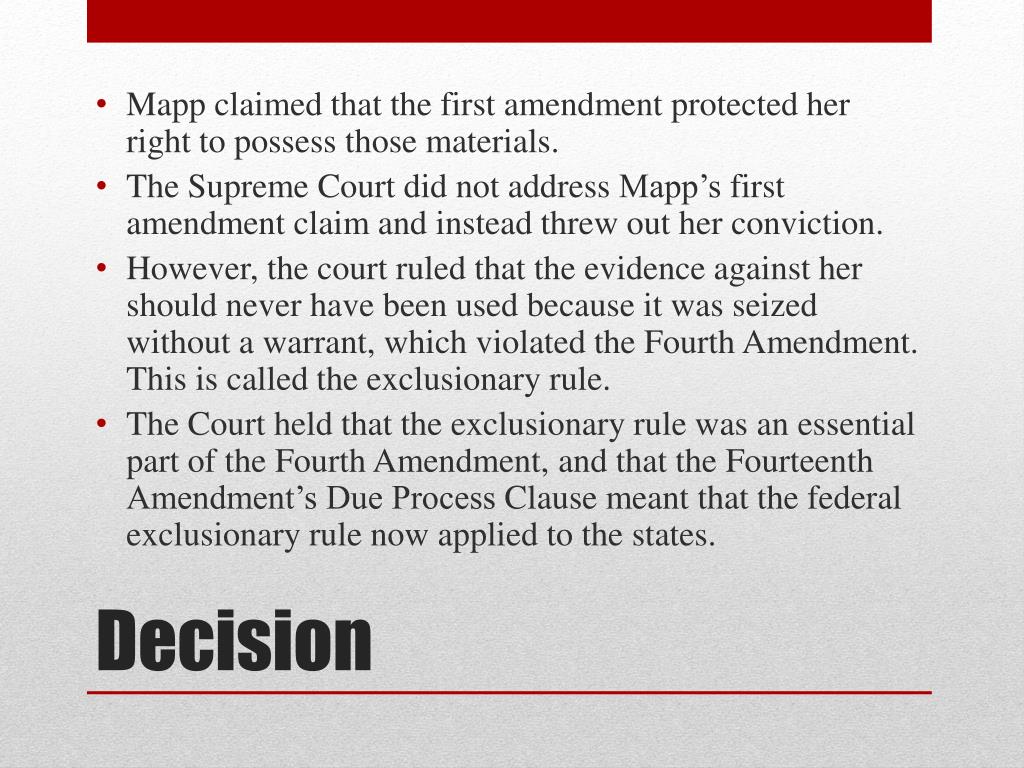Image Credits: @timmossholder on Unsplash (Unsplash License) Introduction Pink; it’s a girl. Blue; it’s a boy. A gender reveal is a normal practice in the United States.
Dollree Mapp, figure in landmark Supreme Court decision in 1961, dies at 91 – The Washington Post
The Supreme Court’s 1961 decision in Mapp v. Ohio made huge changes for the rights of those accused of a crime by deciding whether evidence gathered without a warrant was admissible in state court. Find out more on FindLaw’s Supreme Court Insights. Mapp v. Ohio Case Summary: What You Need to Know – FindLaw Skip to main content Find a Lawyer

Source Image: youtube.com
Download Image
Mapp v. Ohio, case in which the U.S. Supreme Court on June 19, 1961, ruled (6-3) that evidence obtained in violation of the Fourth Amendment to the U.S. Constitution, which prohibits “unreasonable searches and seizures,” is inadmissible in state courts.

Source Image: teacherspayteachers.com
Download Image
Supreme Court Landmark Case [Mapp v. Ohio] | C-SPAN.org Nov 21, 2023Lesson Summary Frequently Asked Questions Why is the Mapp v. Ohio case important? Mapp v. Ohio is important because it applied the protections of the Fourth Amendment against unreasonable

Source Image: slideshare.net
Download Image
How Did The Mapp V Ohio Case Impact Society
Nov 21, 2023Lesson Summary Frequently Asked Questions Why is the Mapp v. Ohio case important? Mapp v. Ohio is important because it applied the protections of the Fourth Amendment against unreasonable MAPP V. OHIO, decided on 20 June 1961, was a landmark court case originating in Cleveland, in which the U.S. Supreme Court ruled that under the 4th and 14th Constitutional amendments, illegally seized evidence could not be used in a state criminal trial. This decision significantly changed state law-enforcement procedures throughout the country.
Brief of Mapp v. Ohio (1961) (Case Study Sample) | PDF
Image Credits: @homajob on Unsplash (Unsplash License) In Georgia v. Public.Resource.Org, Inc.(PRO), the United States Supreme Court revived the government edicts doctrine. This out-of-date doctrine describes how works created by government officials in the course of their duties … PPT – Mapp v Ohio PowerPoint Presentation, free download – ID:1558425

Source Image: slideserve.com
Download Image
The Supreme Court Precedent Cases Mapp v Ohio 1961 – YouTube Image Credits: @homajob on Unsplash (Unsplash License) In Georgia v. Public.Resource.Org, Inc.(PRO), the United States Supreme Court revived the government edicts doctrine. This out-of-date doctrine describes how works created by government officials in the course of their duties …

Source Image: youtube.com
Download Image
Dollree Mapp, figure in landmark Supreme Court decision in 1961, dies at 91 – The Washington Post Image Credits: @timmossholder on Unsplash (Unsplash License) Introduction Pink; it’s a girl. Blue; it’s a boy. A gender reveal is a normal practice in the United States.
Source Image: washingtonpost.com
Download Image
Supreme Court Landmark Case [Mapp v. Ohio] | C-SPAN.org Mapp v. Ohio, case in which the U.S. Supreme Court on June 19, 1961, ruled (6-3) that evidence obtained in violation of the Fourth Amendment to the U.S. Constitution, which prohibits “unreasonable searches and seizures,” is inadmissible in state courts.
Source Image: c-span.org
Download Image
Mapp v. Ohio: A Milestone Ruling Against Illegally Obtained Evidence Cleveland Police Department, May 27, 1957. On May 23, 1957, police officers came to the home of Dollree Mapp based on information that a bombing-case suspect and betting equipment might be found there. The police requested access to the residence but were refused by Mapp.
:max_bytes(150000):strip_icc()/GettyImages-514697672-a983078891874a6e8c2c5750ad00d501.jpg)
Source Image: thoughtco.com
Download Image
PPT – Mapp v. Ohio PowerPoint Presentation, free download – ID:2455753 Nov 21, 2023Lesson Summary Frequently Asked Questions Why is the Mapp v. Ohio case important? Mapp v. Ohio is important because it applied the protections of the Fourth Amendment against unreasonable

Source Image: slideserve.com
Download Image
Dept. of Political Science Northern Illinois University – ppt download MAPP V. OHIO, decided on 20 June 1961, was a landmark court case originating in Cleveland, in which the U.S. Supreme Court ruled that under the 4th and 14th Constitutional amendments, illegally seized evidence could not be used in a state criminal trial. This decision significantly changed state law-enforcement procedures throughout the country.

Source Image: slideplayer.com
Download Image
The Supreme Court Precedent Cases Mapp v Ohio 1961 – YouTube
Dept. of Political Science Northern Illinois University – ppt download The Supreme Court’s 1961 decision in Mapp v. Ohio made huge changes for the rights of those accused of a crime by deciding whether evidence gathered without a warrant was admissible in state court. Find out more on FindLaw’s Supreme Court Insights. Mapp v. Ohio Case Summary: What You Need to Know – FindLaw Skip to main content Find a Lawyer
Supreme Court Landmark Case [Mapp v. Ohio] | C-SPAN.org PPT – Mapp v. Ohio PowerPoint Presentation, free download – ID:2455753 Cleveland Police Department, May 27, 1957. On May 23, 1957, police officers came to the home of Dollree Mapp based on information that a bombing-case suspect and betting equipment might be found there. The police requested access to the residence but were refused by Mapp.